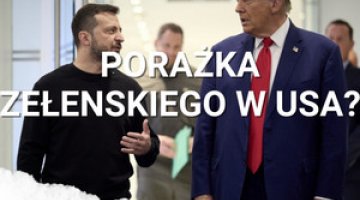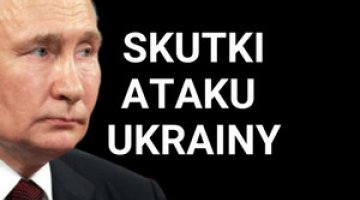A fragile truce in the Donbas
On 20 June, President Petro Poroshenko announced a 15-point peace plan and the unilateral suspension of the anti-terrorist operation in the Donbas until 27 June. This made it possible to hold a consultation between representatives of Ukraine, Russia & the OSCE and the separatists on 23 June in Donetsk, as a result of which the latter also declared a ceasefire until 27 June. The meeting took place as a result of pressure from Moscow, Berlin and Paris, and the role of intermediaries was taken by the pro-Russian Ukrainian politicians Viktor Medvedchuk and Nestor Shufrych. Despite these declarations, separatists resumed hostilities a few hours later in the Antratsyt region, and near Sloviansk a Ukrainian helicopter with nine people on board was shot down. Meanwhile on 25 June, at the request of President Vladimir Putin, the Federation Council cancelled its authorisation to use the Russian army on the territory of Ukraine, a gesture intended to demonstrate Moscow’s will to resolve the conflict by peaceful means.
Although dialogue between the parties to the conflict has been formally launched, reaching any compromise without explicit concessions from Kyiv must be considered impossible. It now appears that President Poroshenko is not ready to agree to Moscow’s demands (including recognition of the separatists as a party to the negotiations, and the autonomy of Donbas), but in the longer term the increase in Russian pressure may force him to adopt a more flexible position. The ceasefire and the start of talks is Kyiv’s way of showing the West its will to work for a peaceful solution to the conflict, demonstrating the success of the peace plan for domestic political purposes, and gaining time to regroup its forces and partially reconstruct the infrastructure in the region. For Moscow, the talks’ primary objective is to induce Kyiv to recognise the separatists as full participants on the Ukrainian political scene, through whom Moscow will influence the fate of Ukraine.
The ceasefire as a prelude to the Poroshenko peace plan
During a visit to Sviatogorsk (Donetsk region) on 20 June, President Poroshenko announced that the Ukrainian army and the National Guard would suspend all military operations in the Donbas until 10 a.m. on 27 June, and presented a plan for a peaceful settlement of the situation. The highlights of the brief, 15-point document are: to organise a ‘round table’ in the east of Ukraine with guarantees of safety for the participants in the talks; an amnesty for those who lay down their arms; the creation of a 10-kilometre buffer zone on the Ukrainian-Russian border; the withdrawal of illegal armed groups and the creation of a security corridor for the mercenaries; general disarmament; the clearing of occupied state buildings in the Lugansk and Donetsk oblasts; for local authorities to resume functioning; changes to the constitution involving the decentralisation of power and the protection of the Russian language; agreement on candidates for governors of both regions with the Donbas elites; and early local elections and parliamentary elections. On 21 June, Poroshenko announced that if the peace plan fails, Ukraine is ready to regain its territorial integrity “by all possible means”.
A ‘round table’ meeting was organised on 23 June in Donetsk, in the regional government building occupied by the separatists. It was attended by representatives of the so-called contact group for resolving the situation in the east of Ukraine: the former Ukrainian President Leonid Kuchma, as Petro Poroshenko’s envoy; Mikhail Zurabov, Russia’s ambassador to Ukraine; and Heidi Tagliavini, a representative of the OSCE. Contrary to earlier announcements, the talks were also attended by representatives of the separatists, including Oleg Tsariov, leader of the Yugo-Vostok movement, who has a warrant for his arrest in Ukraine; Aleksandr Borodai, the ‘prime minister’ of the so-called Donetsk People’s Republic, a citizen of Russia; as well as the pro-Russian Ukrainian politicians Nestor Shufrych, a deputy from the Party of Regions, and Viktor Medvedchuk leader of Ukrainian Choice. The meeting resulted in the declaration of a ceasefire by the separatists in Donbas, also until 27 June, and the announcement of further talks aimed at reaching a lasting agreement.
Ukrainian intentions...
The separatists’ participation in the Donetsk talks had not been previously advertised, and Kyiv has hitherto ruled out the possibility of holding talks with ‘terrorists’. Another surprise was the participation of the pro-Russian politicians Shufrych and Medvedchuk. They did not officially represent the Ukrainian side, instead acting as intermediaries with the consent of Poroshenko and President Vladimir Putin; their presence made it possible to hold the talks in this format (a few hours earlier Poroshenko and Medvedchuk had held an informal meeting). However, in reality they were representing the interests of the separatists. Consent to such a format, and thus indirect recognition of the separatists as a party in the conflict (although Ukraine believes that Russia is a party to the conflict) was probably the price for the separatists’ ceasefire, and thus the announcement of the first successes of the peace plan.
At this stage it is difficult to determine what political issues may be the subject of any further talks. Kyiv insists on the territorial integrity of Ukraine and rejects the federal system, while the armed separatists, acting on Russia’s instigation, are not ready to withdraw from the Donbas. It seems that the talks in Donetsk were primarily a demonstration to the West of Kyiv’s desire for a peaceful solution to the conflict. In the event of the expected failure of any further talks on a lasting political agreement, Kyiv will gain a free hand to continue the anti-terrorist operation. Another practical purpose of the ceasefire was the opportunity for Ukrainian troops in the conflict area to regroup and rest, as well as the essential reconstruction of public infrastructure, such as local water supplies and transportation.
....and Russian goals
The Kremlin’s aim is to consolidate and expand the area under the control of the armed separatist forces, and to force Kyiv to accept the separatists as equal participants on the Ukrainian political scene, who will have the right of veto over Ukraine’s future political system and the course of its foreign policy. At the same time the Kremlin is working to improve its image on the international stage, and wants to show, for propaganda purposes, that it is interested in calming the situation in the Donbas. From this perspective, the start of direct talks between representatives of Kyiv and the separatists, and the announcement of a ceasefire by both parties, represents a success for Russian diplomacy since it de facto places greater restrictions on the use of military force on the Ukranian government than on the separatists.
Moscow is counting on its ability – once Kyiv has entered into direct talks with the separatists – to put pressure on Kyiv, both directly, and indirectly with the help of West European capitals, to gradually widen the scope of the talks, and thus to recognise the separatists as legitimate partners in the domestic Ukrainian political process. Once direct contact between the Kyiv authorities and separatists was made, President Vladimir Putin was able to allow himself the symbolic, but in practice meaningless, gesture of the Russian Federation Council cancelling its authorisation (approved on 25 June) to deploy Russian troops in Ukraine. By this gesture, on the eve of the European Council meeting, Russia has given an argument to opponents of sanctions in the EU, and has diverted attention from the real support it continues to give the separatists in Ukraine in the form of volunteers and weapons. The Russian political regime being what it is, the Kremlin remains able to order troops to Ukraine whenever it deems it politically necessary; there have already been voices raised in the Russian political establishment arguing that President Putin already holds such powers, irrespective of the Federation Council’s decision.
Conclusions
The ceasefire from both sides was intended to be the first step towards the creation of conditions for the implementation of the Poroshenko peace plan. It de facto assumes some concessions to the eastern regions (decentralisation, consent to broader cultural autonomy and the use of the Russian language) and does not foresee any change to the current unitary constitution. Admitting the separatists to the talks was planned as a tactical solution to achieve a ceasefire and thereby fulfil the informal EU requests to find a peaceful solution. In view of the separatists’ violations of the ceasefire, and the relentless political and economic pressure from Russia (in connection with the upcoming signature on 27 June economic of part of the Association Agreement with the EU), implementing the Poroshenko plan would seem to be impossible. In the near future, we should expect further military action by the separatists while they blame Ukrainian forces for violating the ceasefire.
Although peaceful dialogue will continue (on 25 June telephone consultations were held between the heads of state of Ukraine, Russia, Germany and France), it must be doubtful that this will bring any lasting political settlement of the conflict. Ukraine and Russia have adopted an inflexible stand on their positions, and without significant concessions by any of them – which now seems unlikely – any advances in the peace process will be impossible. A return to limited combat in parallel with the talks should be expected. Moscow’s aim remains the imposition of political solutions on Kyiv which will provide the Kremlin with opportunities to influence the Ukrainian government, and one way of achieving this is to maintain the state of instability in the Donbas.




